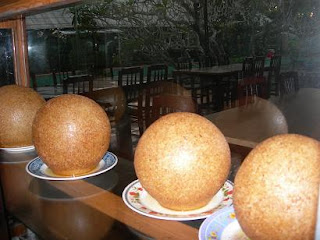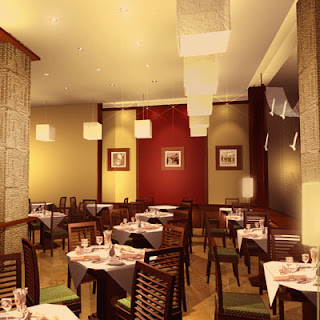Vietnamse Canh Chua (Sour Soup)
>> Nov 27, 2008
Ingredients:
Bring the water to boil. add fish/shrimp then add tamarind juice ( the sour will prevent fish from fishy smell). when the fish is cooked add in the veggies bring the soup back to a boil.turn off the flame add sugar,salt,fish sauce,(MsG) test the soup ( it should be sweet,sour,salty the same) .Garnish with chopped herbs,sliced chilli and fried shallots .Serve hot .it goes well with plain fish sace (dipping) and Cá kho tộ ( braised fish in claypot) ,steamed rice.

cá kho tô
#For sour taste you maybe use :lemon just,sour starfruit, sour fermented rice...in place of tamarind juice
Adjust the ingredients to create what ever version you’re in the mood for varieties:
• Canh chua me - made with tamarind; includes most varieties of canh chua o Canh chua me đất or canh chua rau nhút - made with water mimosa (Neptunia oleracea)
• Canh chua cá - made with fish
o Canh chua đầu cá - made with fish heads
o Canh chua cá lóc - made with snakehead fish
o Canh chua cá bông lau - made with Pangasius krempfi catfish
o Canh chua cá lăng - made with Hemibagrus catfish
o Canh chua cá ngát - made with Plotosus catfish
o Canh chua cá trê - made with airbreathing catfish
o Canh chua cá linh bông so đũa - made with mud carp and Sesbania grandiflora flowers
o Canh chua lá giang cá kèo - made with Aganonerion polymorphum leaves and mudskipper fish in the genus Apocryptes
o Canh chua lươn - made with eel
o Canh chua cá hồi - made with salmon
o Canh cải chua cá - made with made with pickled mustard greens and fish
• Canh chua tôm - made with shrimp
o Canh chua tôm rau muống or canh chua rau muống nấu tôm - made with shrimp and water spinach (Ipomoea aquatica)
o Canh chua thơm nấu tép or canh chua thơm nấu với tép - made with pineapple and small shrimp
• Canh chua gà - made with chicken
o Canh chua lá giang gà or canh chua gà lá giang - made with chicken and Aganonerion polymorphum leaves
o Canh chua lá giang cá kèo - made with Aganonerion polymorphum leaves and mudskipper fish in the genus Apocryptes
• Canh chua rau muống - made with water spinach (Ipomoea aquatica)
o Canh chua tôm rau muống or canh chua rau muống nấu tôm - made with water spinach (Ipomoea aquatica) and shrimp
• Canh chua chay - vegetarian :Omit garlic, use tofu (fresh and fried), and straw mushrooms.
• Canh chua măng - made with pickled bamboo shoots
• Canh cải chua - made with pickled mustard greens
o Canh cải chua thịt bằm - made with pickled mustard greens and ground pork
o Canh cải chua sườn non - made with pickled mustard greens and baby back pork ribs
o Canh cải chua cá - made with made with pickled mustard greens and fish
o Canh cải chua ruột non or canh cải chua lòng heo - made with pickled mustard greens and pork intestines
o Canh cải chua nấu với bắp bò - made with pickled mustard greens and beef shank
• Canh chua Thái or canh chua Thái Lan - an adaptation of Thai tom yum



















